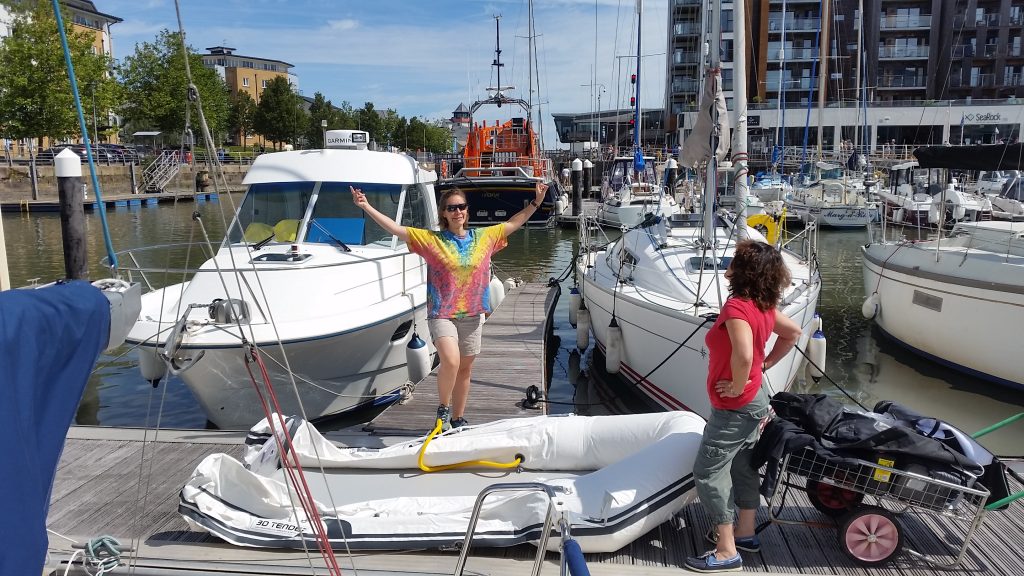
Despite its size, our 2.9m 3D Superlight Twin Air tender was unpacked and inflated in about 15 minutes. Greatly assisted by an enthusiastic crew!
Travels and boat care

Despite its size, our 2.9m 3D Superlight Twin Air tender was unpacked and inflated in about 15 minutes. Greatly assisted by an enthusiastic crew!

We first thought that the propeller hub alone could be replaced. But it turned out that the existing folding propeller on Molia was not made by Volvo, so it proved impossible at present to identify and locate a replacement part.
I must give a shout out here to FYB Marine in Falmouth, who are the official Volvo Penta Service Dealers for Cornwall, and in particular to Jerry Hobkirk there who advised on the correct specification for a new propeller. Not something I could have done.
Molia has a 19 HP Volvo Penta D1-20 engine coupled to a Volvo saildrive 130S-B. Jerry ran the propeller size calculation which takes into account the engine, the gear ratio (2.19), the waterline length (8.62m) and maximum beam (3.4m). It comes up with a 2-blade 16×10 left-hand propeller, and I had already specified that it must fold.
Apparently all the prop shafts over a certain Volvo Penta saildrive size (including the 130S-B) are the same.

I will post a photo of the new propeller here – as soon as it arrives.
Jerry is a mine of useful information and advice about these Volvo engines. All very much appreciated for an engine beginner like me!
Volvo recommends that the saildrive seal is replaced every 7 years so we set about having this work done before Molia is put back into the water this season.
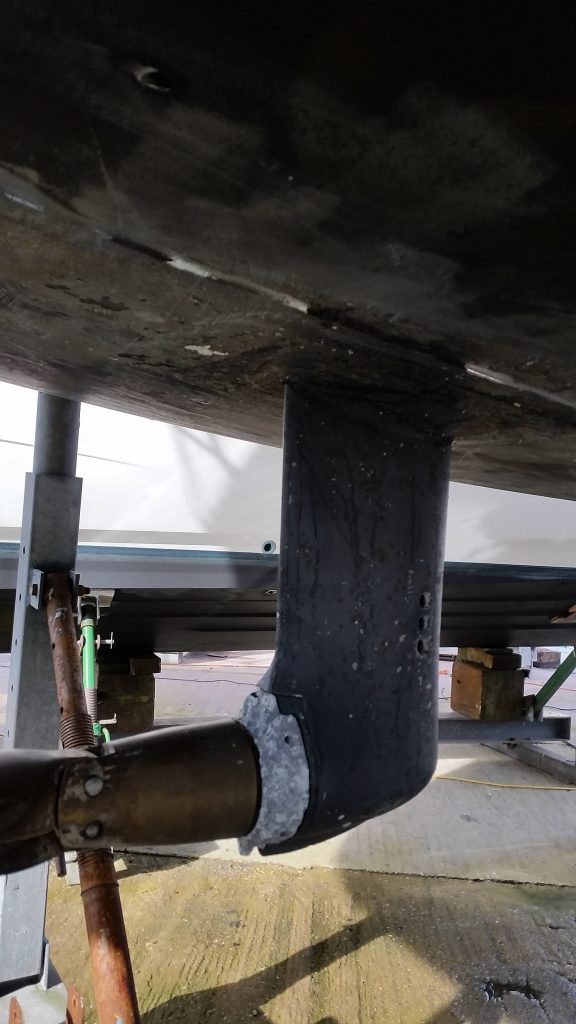
We will combine this work with servicing the engine and replacing the split anode that sits between the saildrive and the propeller.
The service will replace the oil and the filters.
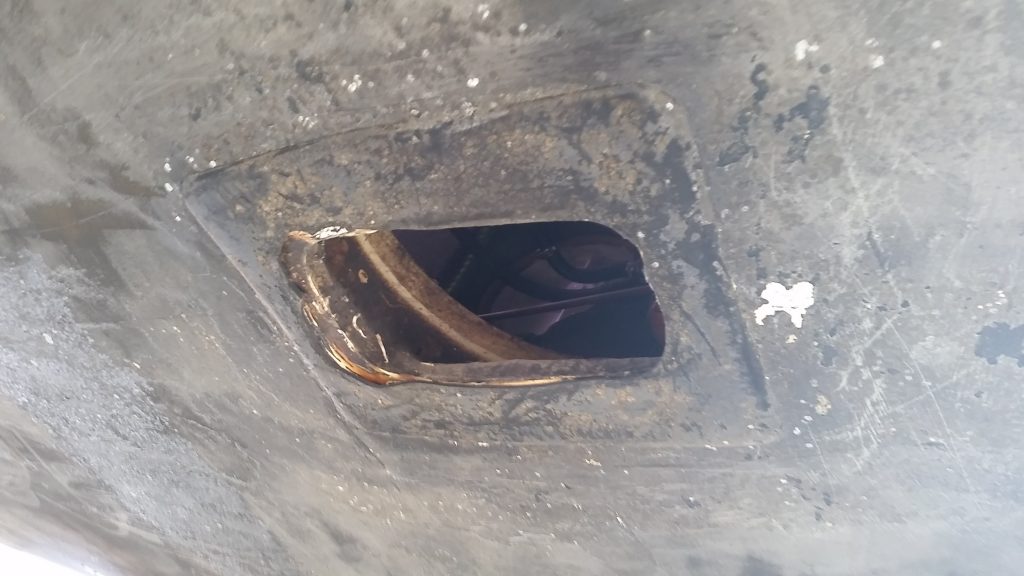
The saildrive and the lower seal have been removed. In fact the engine is also in the Engineer’s workshop – so you can see right through the engine compartment !
Unfortunately the Engineer broke the propeller hub when he was taking the saildrive off. So we will need to get a new one. See New Propeller.
Having a quick look at the chartplotter on Molia.

It is a Raymarine RC435 with an external antenna. These date from around 2004, so it is probably an original installation.
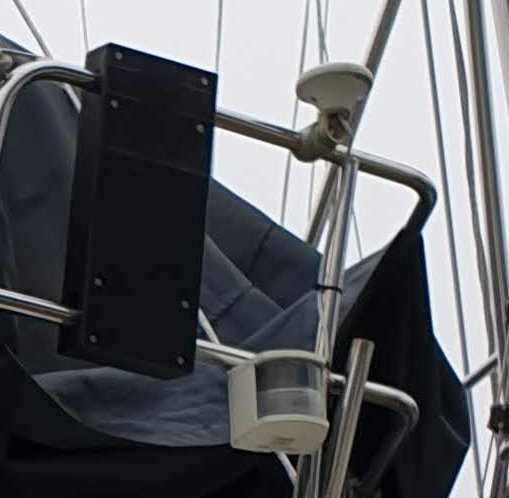
You can see the antenna on the aft rail starboard side.
I am thinking of an upgrade, but need to do a lot of research!
Molia has black antifouling paint which needs renewal before we launch. But which one to choose?
In 2016 Practical Boat Owner (PBO) tested 20 different paints in 13 UK locations. The results are online here. They did not actually test in the Bristol Channel – so I chose a paint that did well in South Wales.

I will let you know how it performs in the waters between Dartmouth and Portishead!
The hull was pressure-washed when Molia was lifted out of the water, and the existing surface is clear of any growth and the condition of the surface is good.
Wet and dry sandpaper (I used a 180 grit) all over, then masking off the waterline. Well stirred paint. Application with a small roller takes just over one hour per side on Molia, and almost all of a 2.5 litre can.
My favourite bit (centre) is painting the keel and its bulb.
There are 2 flexible gas hoses that need replacing regularly on a boat to satisfy surveyors and insurers, and keep you safe!
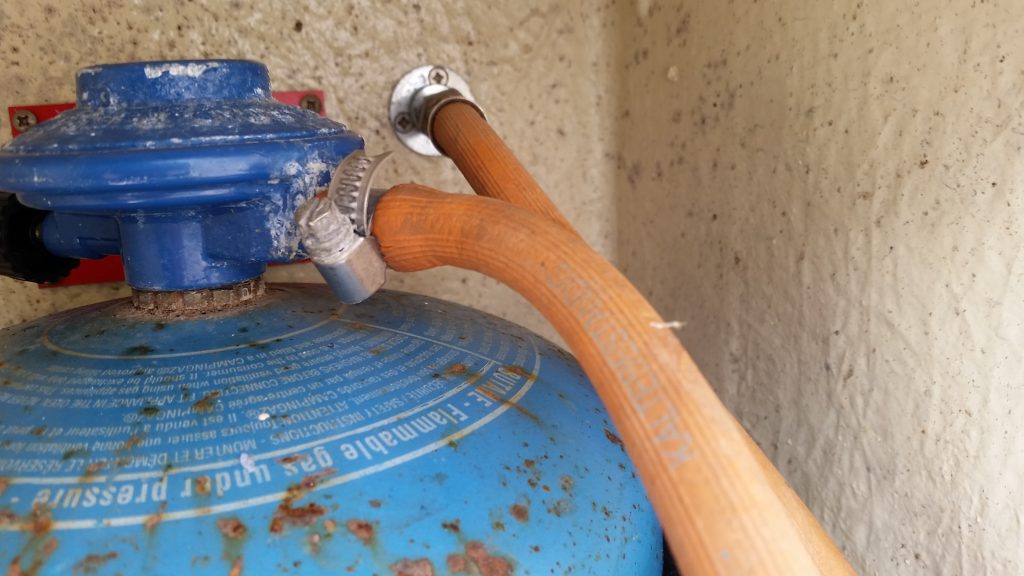
Cylinder Hose – leads from the cylinder valve to the start of the (usually solid) boat gas distribution pipe. On Molia there is a bulkhead connector at the back of the gas locker.

Cooker Hose – this leads from the other end of the boat gas distribution pipe to the cooker.
Orange is the colour required by BS3212 for uncovered type 2 LPG gas hoses.
BS 3212 – British Standard specification for the performance and dimensional requirements for rubber tubing, hose and complete assemblies for use in LPG vapour phase and LPG/air installations in environments up to a maximum ambient temperature of 60°C.
Status : Superseded, Withdrawn Published : June 1991 Replaced By : BS EN 16436-1:2014+A2:2018, BS EN 16436-2:2018
( BS 3212) 3.1 Classification
a) Type 1: flexible tubing for applications not exceeding 50 mbar working pressure.
b) Type 2: hoses for applications not exceeding 7.5 bar working pressure.
(BS 3212) 3.2 Colour Identification
a) Type 1 shall be black.
b) Type 2 shall have an orange cover …

The upper hose has is a 1/4 inch left-hand nut connector. The lower hose has the ‘GOK’ 8mm compression connector of the type used on Molia. (GOK is the German manufacturer of these connectors.)
Small diameter LPG hose connectors should be ‘crimped’ which these are.

Here is one I took apart: the metal ferrule is crimped onto the outside of the orange hose clamping the ‘hose barb’ securely in place.
The fittings must be stainless steel and brass (as illustrated) to comply with UK marine standards.
You should replace the cylinder valve if it is showing signs of corrosion or wear.
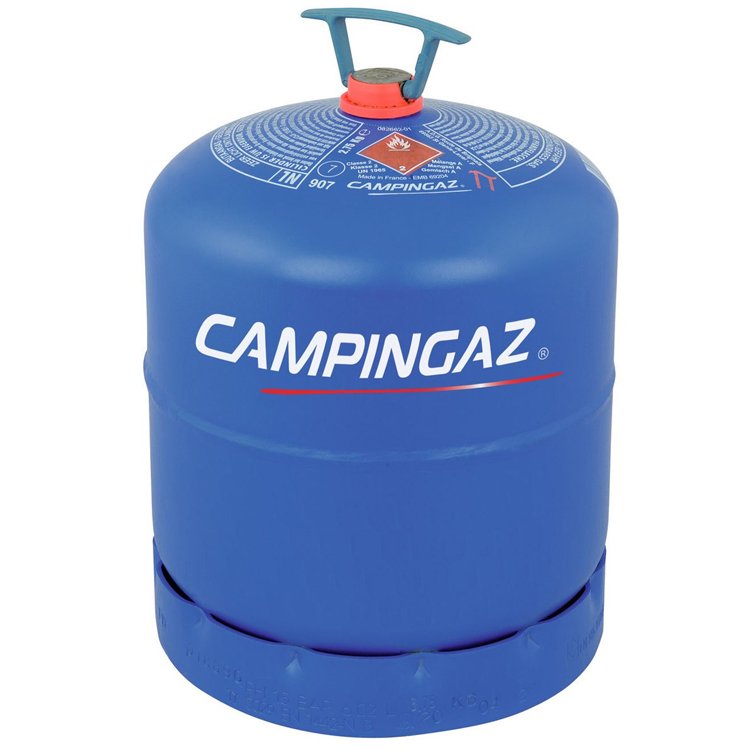
First identify the gas bottle type – an excellent help video here from Go outdoors also shows how to fit the valve to the bottle.
Molia has a Camping Gaz R907 bottle. These are popular on continental Europe, and readily available in the UK.

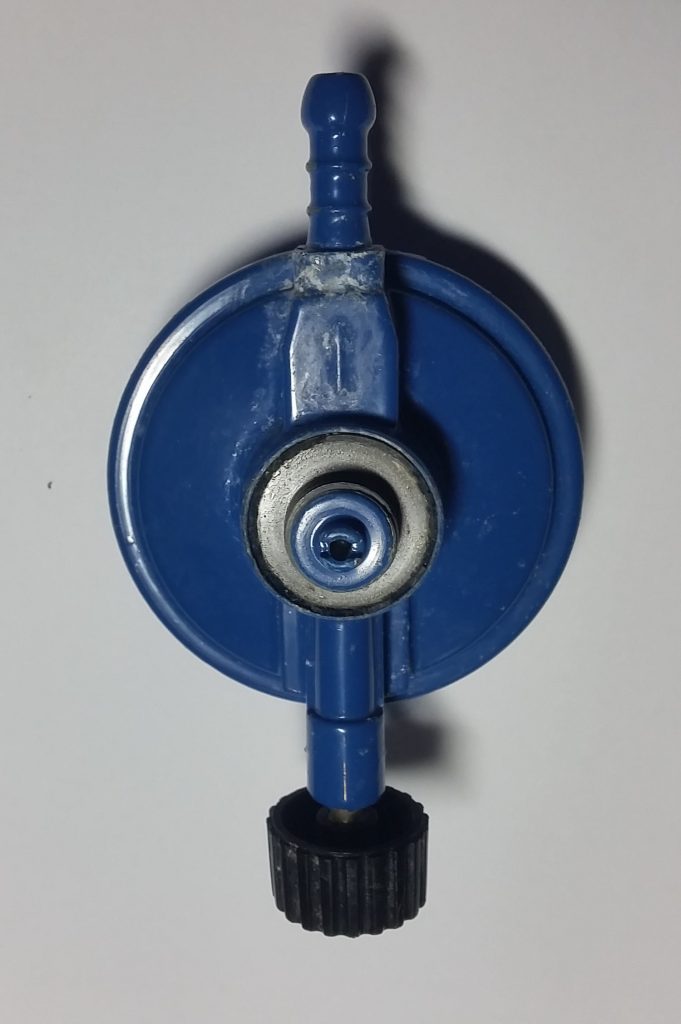
Molia has a Camping Gaz R907 cylinder valve. Only some surface corrosion so we will replace this another time.

Gas hoses are out-of-date and need replacing before we go anywhere.
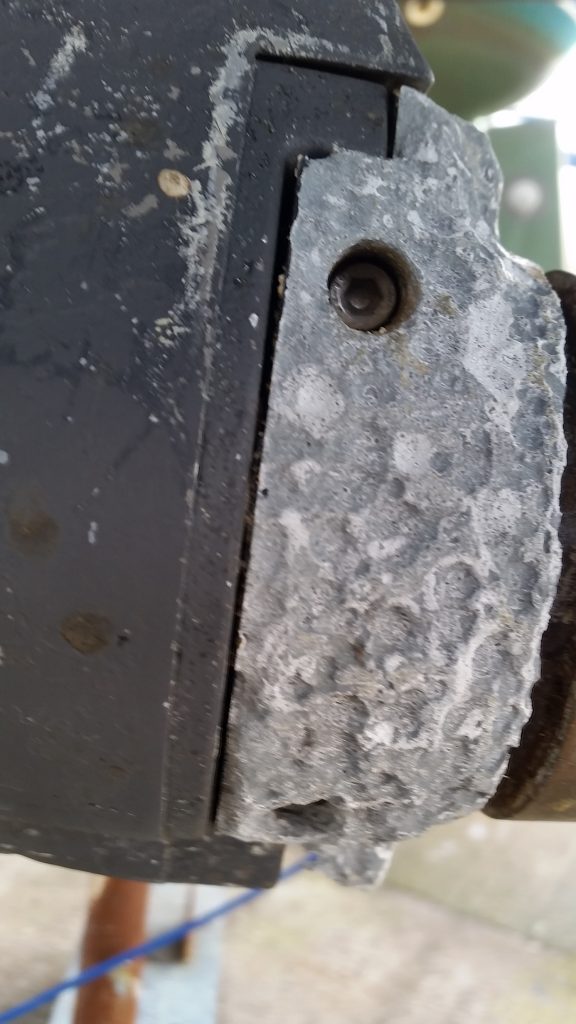
The anode is corroded. This is the only one on Molia, so we will replace it when the sail-drive seal is done.
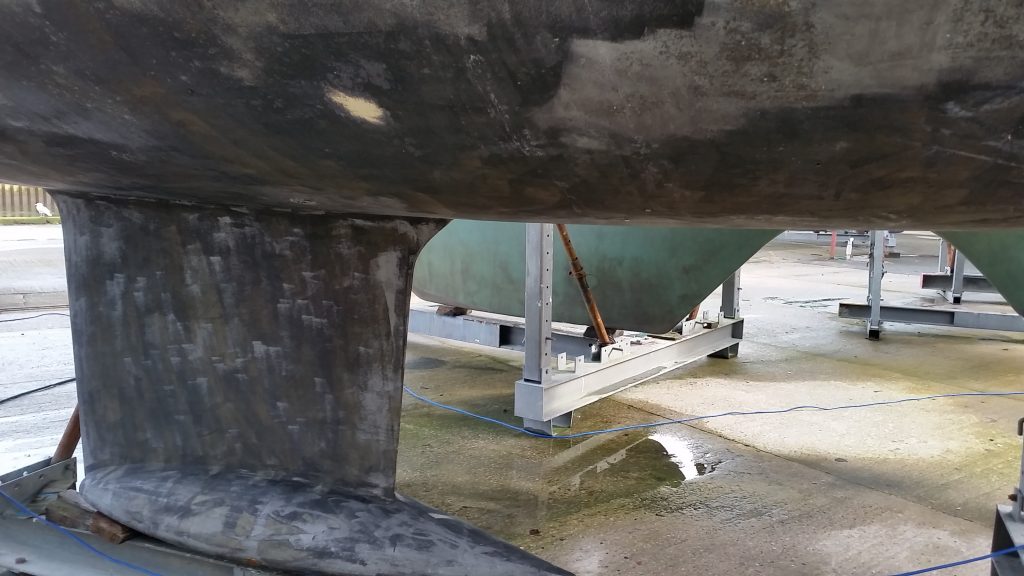
Antifouling to do – but the surface seems to be already quite well prepared!
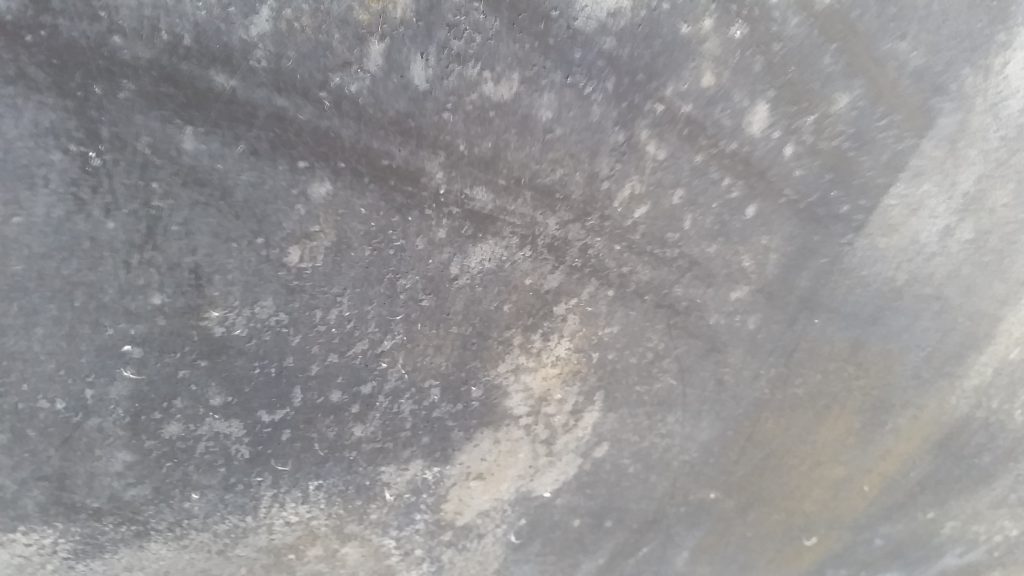

So the first plan is to take Molia down to a swinging mooring off Dittisham on the River Dart. So we are going to need a tender to get to and from the jetty if the ferry is not running.
We wanted something large enough to take a crew of four safely, but that is not too heavy. So the 3D Superlight Tender Twin Air 290 was our choice. It weighs only 17 kg but is 2.9m long.
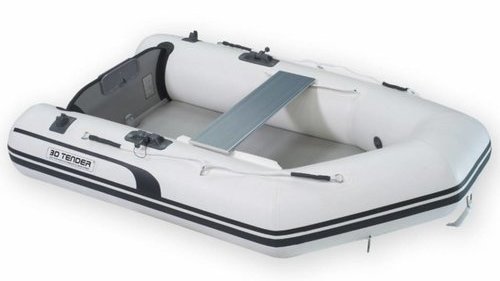
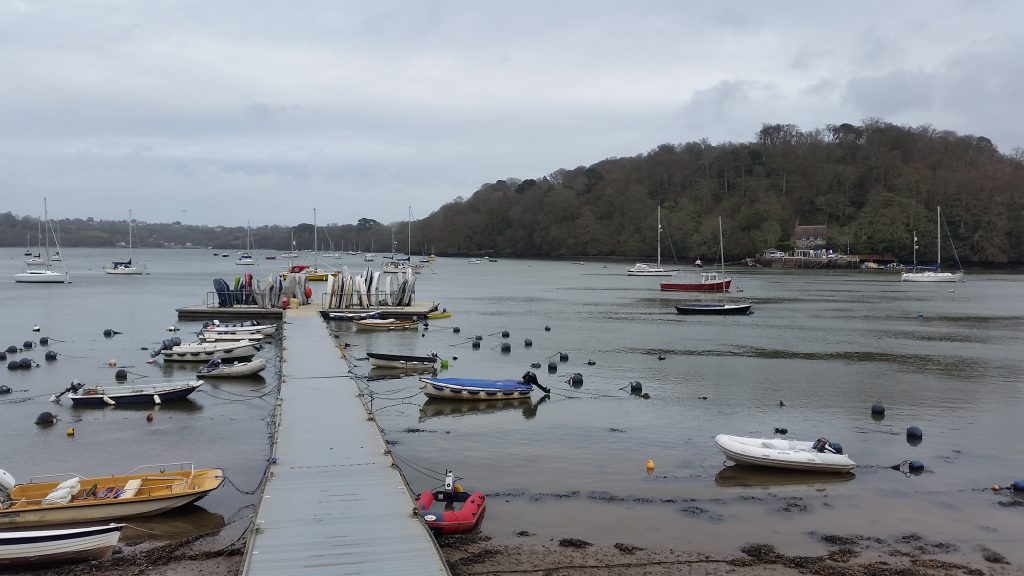
It is not very far from the moorings to the jetty at Dittisham, so this is more something for future use.
In the spirit of ecology we looked at a couple electric outboard motors. These are quite unusual in the UK at present, and are disadvantaged by limited range. However, they have some significant plus points if you do not need a long range:
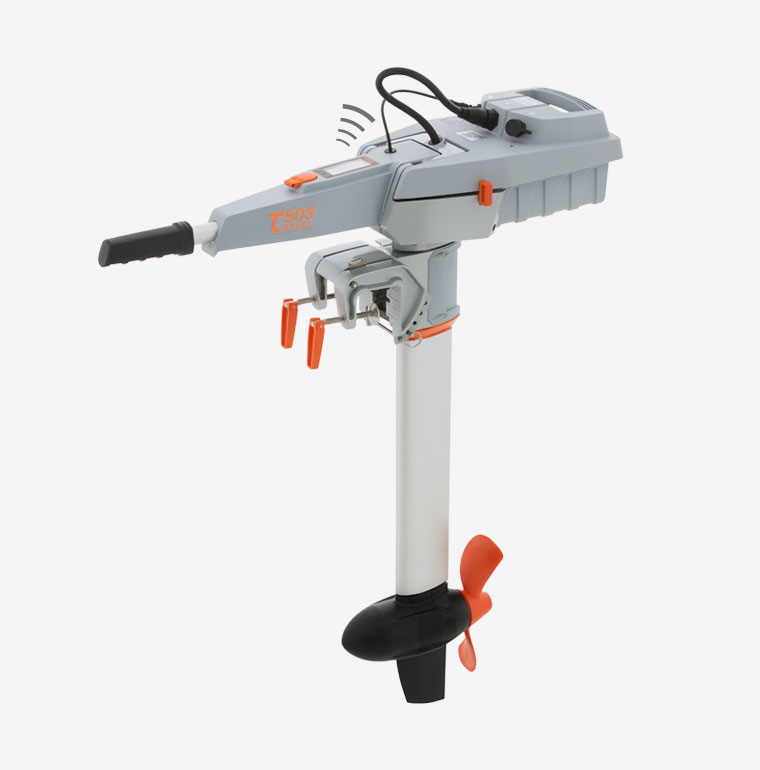
We looked at this make which is becoming quite well known. These motors break into 3 sections for carrying: the handle, the battery and the motor. These units weigh 14.2 kg.
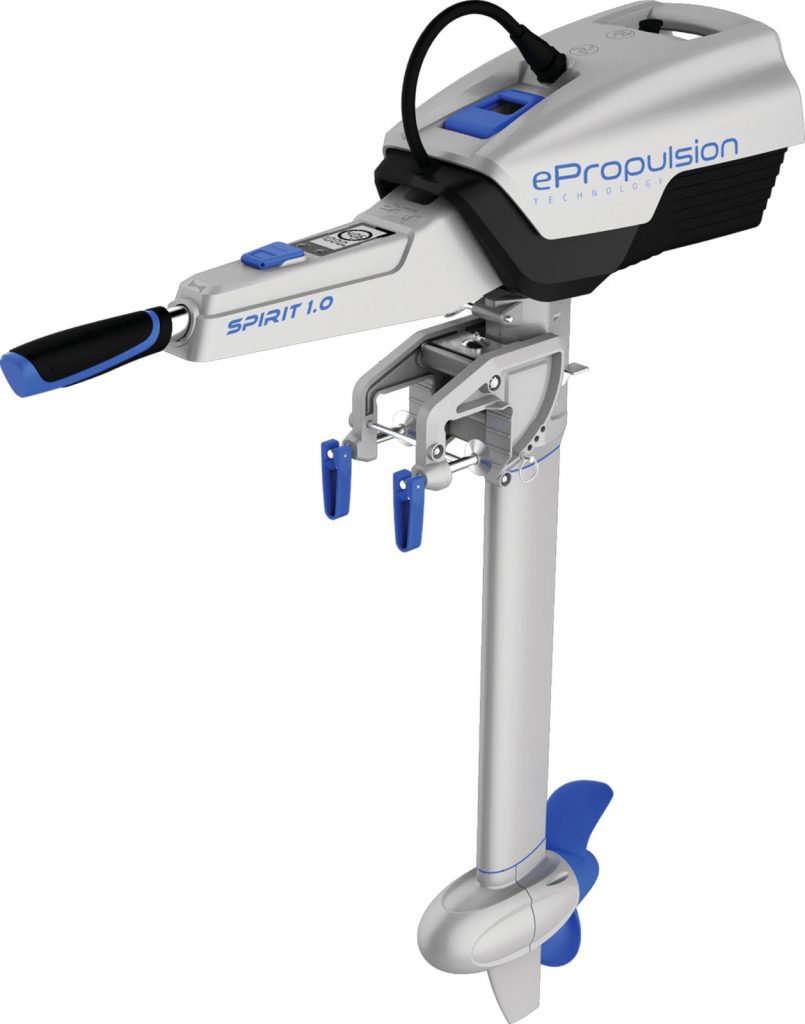
Benefits from not being the first: longer range, quieter and faster battery charging time than the Torqeedo. These units weigh a bit more at 16 kg.
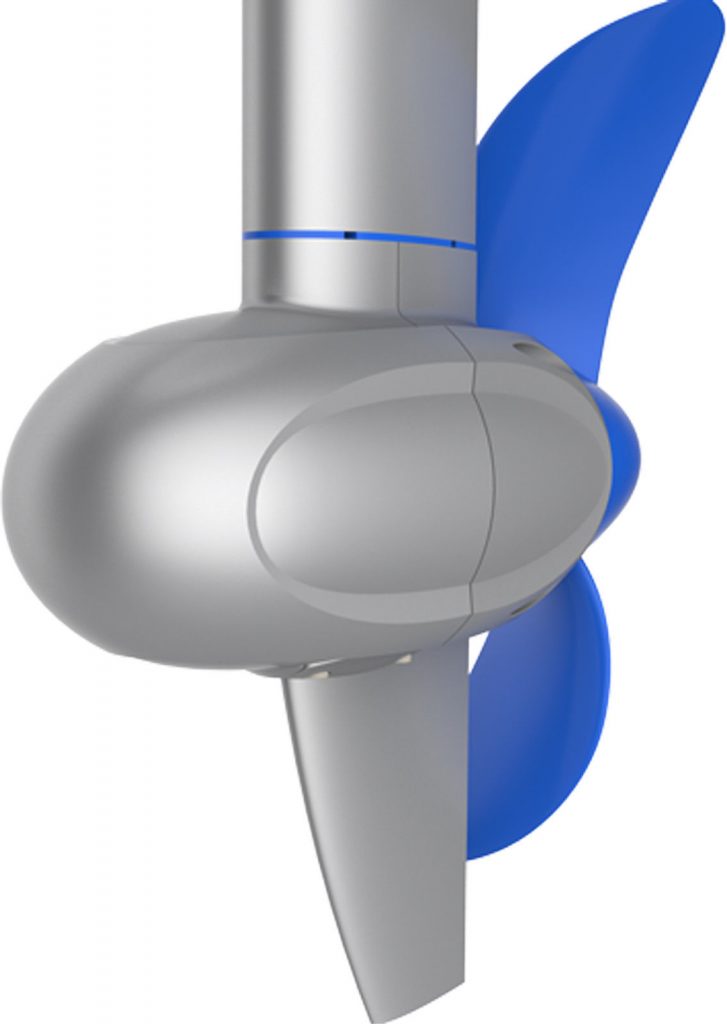
It only breaks into 2 sections for carrying, but its motor is direct-drive, so there is no mechanism above the water – which is what makes it quieter and more efficient.
Not tried it in the water yet – I will let you know.
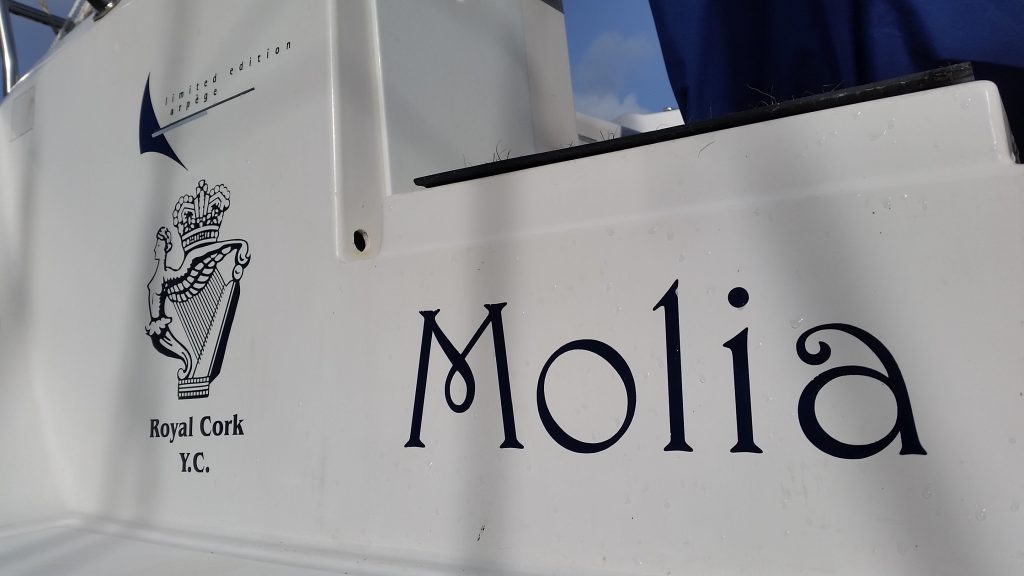
Welcome to the Yacht Molia website for news of our travels, and thoughts on her care and equipment. Molia is a Dufour 325 Grand Large with the shallow draft keel option; and is a 2006 limited edition Apèrge model – the original Apèrge model was launched by Michel Dufour in 1965. (Ref Dufour Yard History)
Molia is currently ashore.